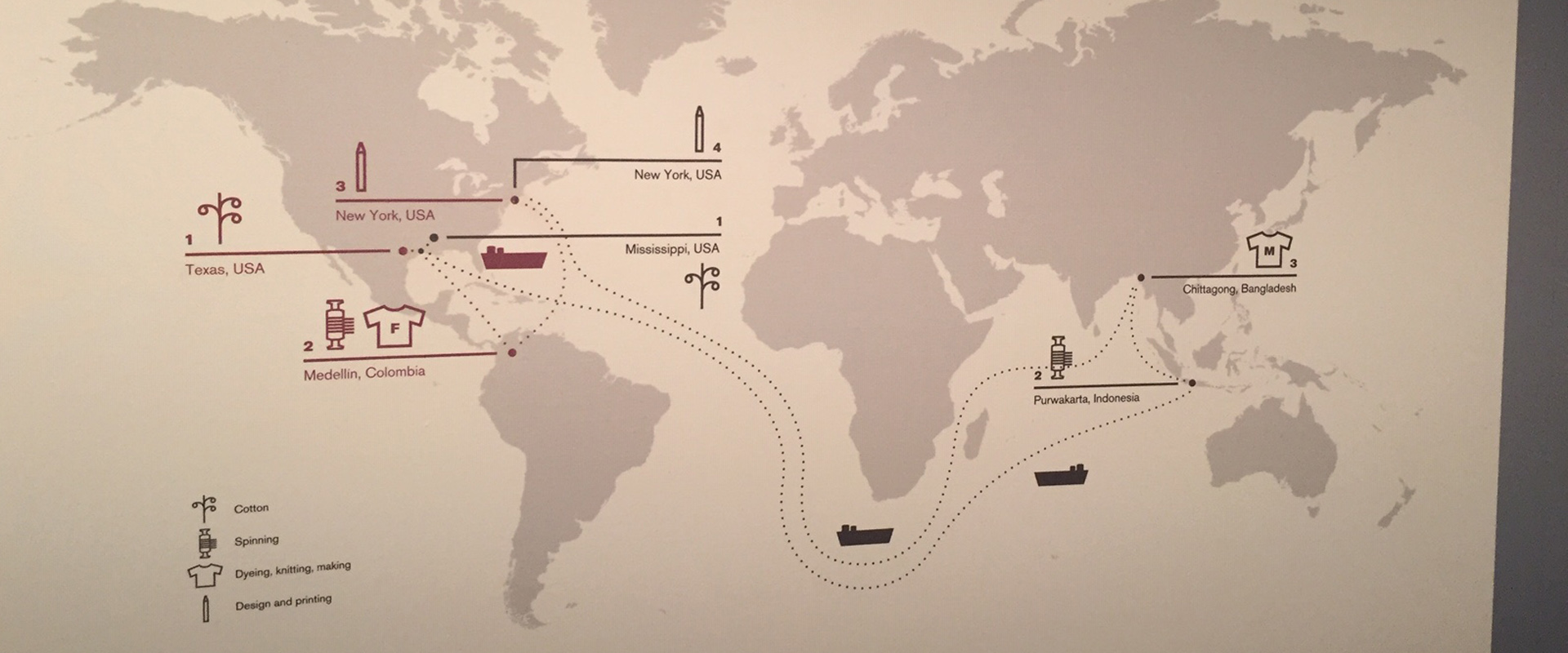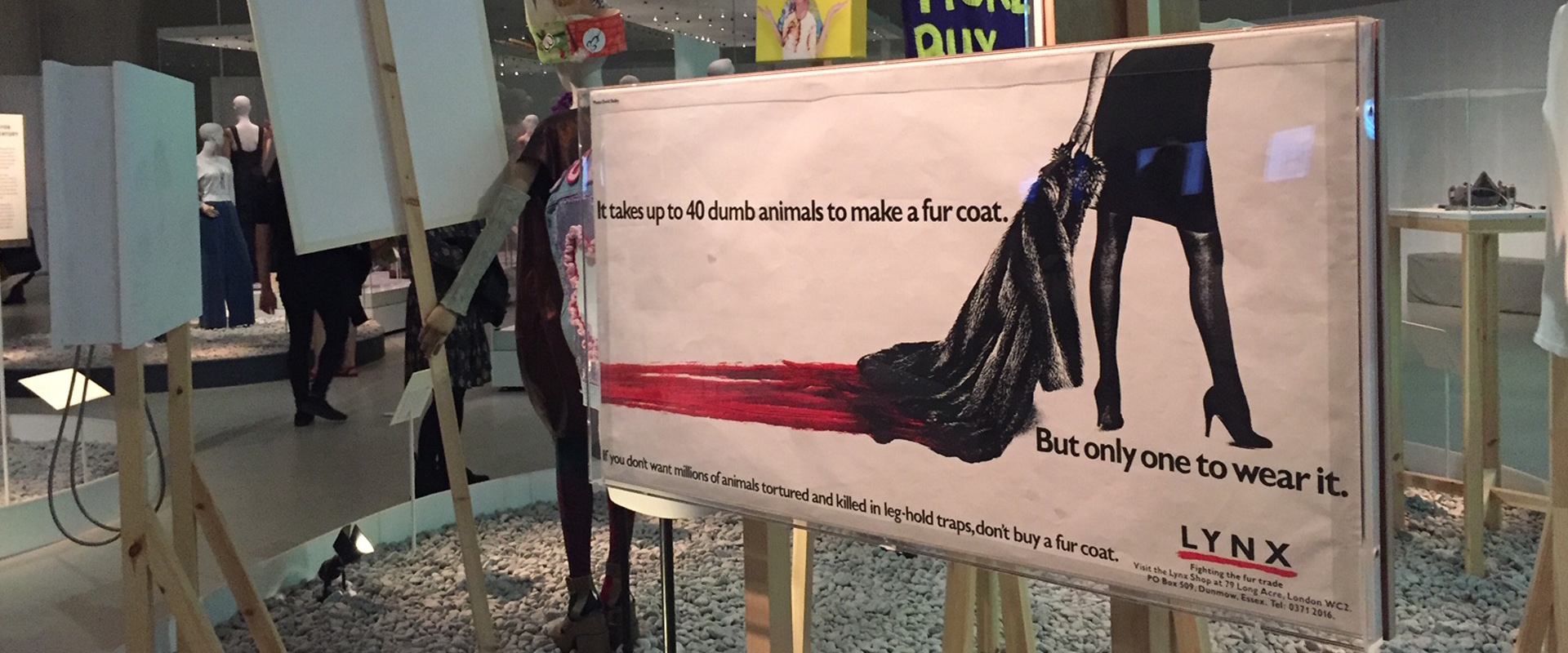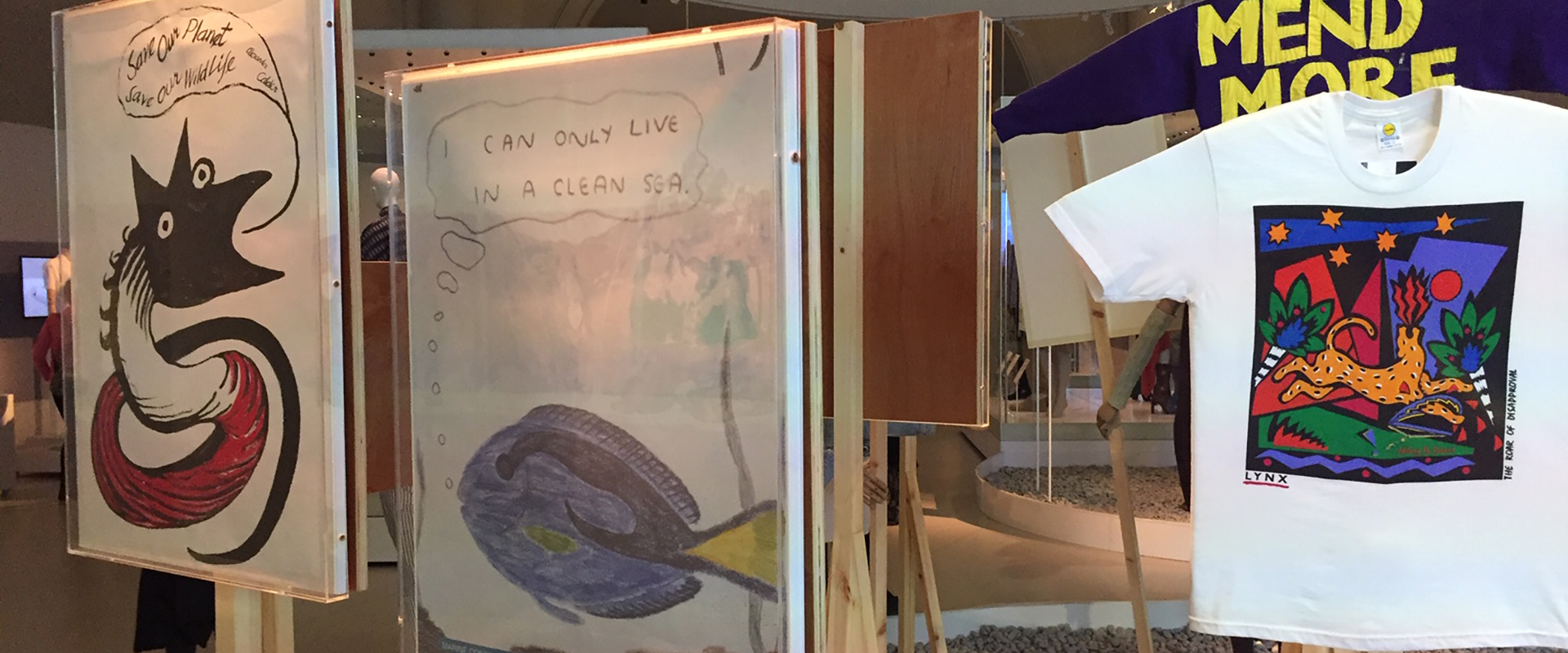Last week I went to an exhibition at the Victoria and Albert Museum called Fashioned from Nature, which explores the complex relationship between fashion and nature over the past 400 years.
From textiles, to prints and the manufacturing process, the exhibition was a controversial eye opener into an industry plagued with pollution, debate, politics and revolution.
In fact, although it was marketed as a fashion exhibition and located in the grand dome of the permanent fashion archives, a superficial journey of aesthetics it was not!
Fashioned from Nature was a cultural kick up the bottom to an industry responsible for one of the highest global carbon emissions caused throughout its lifecycle, from picking, to purchasing and beyond. And with the majority of visitors being the typical consumer of fashion, the exhibition was another channel forcing us, the general public, to take a long hard look at the reality of what is happening to our planet.
So how has the fashion industry achieved this carbon controversial title?

Are you aware of the lifecyle of a garment?
This board at the 'Fashioned from Nature' exhibition at the Victoria and Albert Museum details the typical manufacturing process of a modern day garment.
Addressing the issues
“It’s about the future of fashion – and the planet” – Time out
There were a number of issues addressed throughout the exhibition which journeyed from the 1600s all the way through to modern day.
In the 1600s cotton was huge commodity in the British Empire, kick starting an industry where slavery and exploitation was rife. The exhibition detailed every element of the cotton trade, from the beauty of the cotton plant itself through to the people who picked it and the items it created. Today issues with slavery and exploitation are still topical for all industries operating in the modern world, in the cotton industry Uzbekistan is listed as one of the top locations for cotton slavery with Global Citizen estimating 1,236,600 forced slaves (2017).
Moving on from here it detailed the use of animal products such as fur, feathers and bone, popularised in clothing from the 16th and 17th centuries. Bone was a common commodity used to form structures such as bodices and skirts. The issues of fur trading and the use of other types of animal products is still an issue subjected to protest all around the world. Most recently, high end coat company Canada Goose were hit with controversy over their use of Coyote fur and goose down, highlighting how little much has changed since 1600.

What are your thoughts on the use of fur?
This is one of the many anti-fur advertisements we are now accustomed to seeing since the rise of anti-fur campaigns in the 1980s.
One of the most topical issues highlighted in the exhibition which was also featured in Stacey Dooley’s recent documentary into “Fashion’s Dirty Secret” is water pollution. The Industrial Revolution of the mid to late 16th Century transitioned the world to new manufacturing processes which in turn ignited mass production and innovation. One of the main industries which benefited from the revolution was Textiles including cotton spinning by stream or water which drove cotton consumption in Britain from £2 million to over £588 million within 100 years. The side effect of this revolution however was water pollution, an issue that continues to plague the fashion industry to this day.
Today more than half a trillion gallons of fresh water are used in the dyeing process of textiles each year which according to Future Fashion Forward amounts to 20% of global industrial water pollution. In fact, a single pair of jeans takes around 7,000 litres of water to produce.

"I can only live in a clean sea"
It is estimated that by 2050 there will be more plastic in the ocean than fish.
The lasting impact of exhibitions
“Inspiring V&A show determined to incite change” – Evening Standard
The way we use resources and the impact this has on our natural world are visual. The “Drowning in Plastic” documentary shown on the BBC was watched by millions people and reignited a topic of conversation that is easily hidden behind the curtain. Other mediums such as exhibitions are a great way to remind us all in a kinaesthetic style what the impacts are and how we have to make a change in order to save our planet and the natural world as we know it.
In 400 years’ time will there be an exhibition about the changing ways we powered our buildings? Will we look at the energy industry and be shocked at the exploitation? Will we shudder at the carbon emissions and air pollution chocking our lungs from burning fossil fuels? And will we be reading plaques on museum walls about the pollution that once seeped through the veins of our natural landscapes?
Or maybe we won’t even be here to reflect on it...
Back to the fashion industry though, in the past year major brands have already started to adjust their CSR principles based on the increase in negative press, public awareness and environmental disasters such as the high level of microfiber textile plastics being consumed by marine life. This includes Gucci announcing it will no longer use real fur it’s in collections, Burberry announcing that it will no longer destroy unsold stock after it was discovered that in 2017 nearly £30 million worth of stock was incinerated and Eileen Fisher opting for organic cotton and linen and reducing its water usage in order to make its supply chain sustainable by 2020.
Final thoughts
2018 has been the year of ‘opening the lid’ on environmental issues and the industries who are to blame – in this case the fashion industry, second to the oil industry. Leading on from documentaries like Blue Planet 2 which aired almost a year to the day, documentary makers and exhibition curators have continued to plug the environmental messages throughout all mediums of consumed media and I think in 2019 we need to ramp it up.


